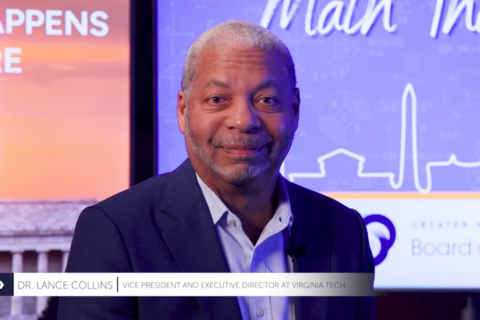Just 13 years ago, in 2010, nearly 80% of computing workloads resided in small, on-premise data centers run and managed by individual organizations. That flipped a few years ago with the expansion of cloud technologies. Today, nearly 90% of those data operations now exist in the cloud, supported by far fewer but far larger data centers run by cloud service providers, said Shannon Kellogg, vice president of public policy for the Americas at Amazon Web Services.
The amount of energy necessary to meet the world’s ever-increasing computing is enormous, he said. But “taking those workloads out of individual data centers run by separate organizations” and consolidating them into centralized locations makes the energy consumption much more energy efficient, said Kellogg, who is also on the board of the American Council for Renewable Energy and vice chair of the Data Center Coalition.
Today’s data centers aggregate computing resources so the facilities can leverage innovations in equipment and technology to maximize energy efficiency, he noted. According to Kellogg, data centers’ computing output jumped sixfold from 2010 to 2018, but “the power consumption as that transition was happening went up by only 6%.”
Setting the bar for data center sustainability
In Northern Virginia, the data center industry has a massive footprint, including a large and growing presence by AWS.
“Amazon is committed to investing and innovating in sustainability across its businesses to create a more sustainable future — not just embedding decarbonization strategies throughout its business, including the deployment of onsite and offsite renewable energy, but also by AWS focusing on efficiency across all aspects of our infrastructure and returning more water to communities than AWS uses in its direct operations,” Kellogg said.
In 2019, Amazon co-founded and became the first signatory of The Climate Pledge, committing to reach net-zero carbon emissions by 2040. As part of that commitment, Amazon is on a path to power its operations, including AWS data centers, with 100% renewable energy, he said.
Originally, Amazon set a goal to be powered with 100% renewable energy by 2030. “But Amazon is on a path to meet that target five years early, by 2025,” Kellogg said.
As Amazon has added and planned new data center locations, availability of renewable energy ranks as a key factor in site selection.
“It’s really super important to have the ability to acquire renewable energy on the grids that we operate,” he said. “For example, Amazon has announced 18 solar farms in the Commonwealth of Virginia and more than 400 renewable energy projects worldwide.”
The power of partnerships
Partnerships with local utilities, renewable energy suppliers and public sector organizations have also helped Amazon make progress on its sustainability agenda and achieve energy efficiencies, Kellogg said. In Virginia for example, the company often works with Dominion Energy. He also pointed to a 451 Research report that found AWS data centers are 3.6 times more efficient than the median of surveyed enterprise data centers.
Renewable energy is, of course, a very important part of sustainability. But more than that, “it’s not only the right thing to do for the environment, it’s also the right thing to do for the economy,” he said.
When the data center industry decides to local a facility in a community, there are benefits in terms of jobs, but there’s a broader economic ripple effect.
“When we and others are investing in these projects, that leads to funding for farmers who benefit,” when their land is acquired, for instance, Kellogg said. “And it results in more investment … into local school districts, into local infrastructure,” which leads to an increase in science, technology, engineering and math programs for students and for other community benefits, such as new roads and parks.







